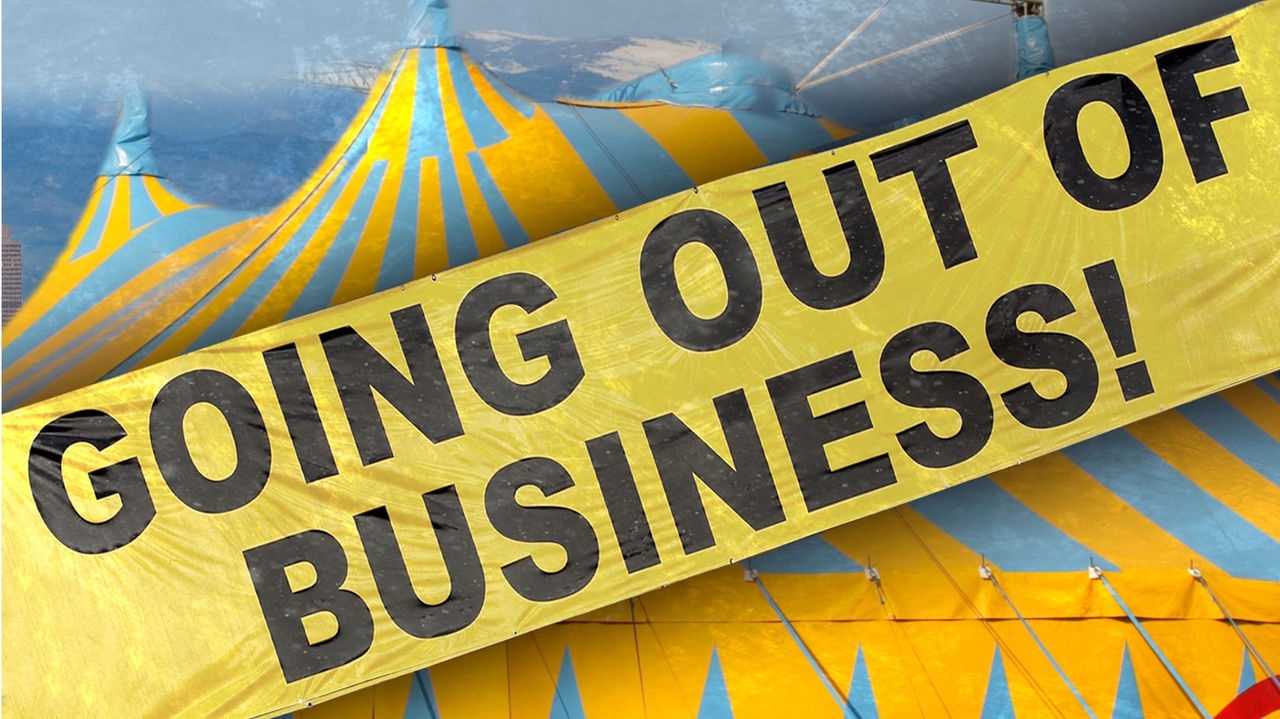4 Lessons to Learn from Declining Business Models
How to prevent your organization from going extinct.

After 146 years, the Ringling Bros. and Barnum & Bailey circus will permanently close in May. Those with fond memories of the big top have mixed emotions: sadness, surprise, confusion. Meanwhile, animal rights activists rejoice.
Executives at Feld Entertainment Inc., the circus’s parent company, offered several explanations for why the business became obsolete, including high operating costs, dwindling ticket sales and individuals’ decreasing attention spans. The circus is no longer “a viable business model,” a spokesman told The New York Times.
In other words, it had reached the decline phase of its life cycle, which is defined by the intersection of revenue and time. Not unlike the people who run them, businesses are born, grow, reach maturity and, finally, begin to decline. The maturity stage is when the company achieves optimal market saturation and the peak point of revenue. To avoid moving into decline, leaders must introduce new products or services or otherwise change the business so it can grow again.
Various companies have failed after remaining stuck in an outdated model, and the reasons vary. We used to visit Blockbuster to get the latest movie on video. Redbox and Netflix disrupted that brick-and-mortar model, and Blockbuster failed to adapt to changes in technology. Now, we stream movies over the Internet as we sit on the couch.
Competition can also hasten a business’s demise. Executives at Borders Group Inc. were outwitted by those of their direct competitor, Barnes & Noble, who identified Amazon.com and other online retailers as a threat early on and adapted. Barnes & Noble developed its own e-reader (the Nook), put Starbucks cafes in its stores, and eschewed store locations that weren’t in or near large cities.
What can HR leaders do to prevent their organizations’ business models from reaching the decline phase? Here are a few tips:
Understand the business life cycle and industry forces that command each of its phases. Harvard Business School professor Michael E. Porter’s five-forces framework of analysis is a great place to start. It describes five factors that shape industry competition: competitive rivalry, the bargaining power of suppliers, the bargaining power of customers, the threat of new entrants to the market, and the risk of substitute products or services.
Use analysis tools to better understand the potential of your business. To determine your company’s best product or service advantage, consider a value-chain analysis. To define your competitive edge, use tools for examining market growth rate relative to market share, such as Boston Consulting Group’s growth share matrix.
Avoid getting complacent when you succeed. Leaders at Netflix understood this even as they were succeeding with their initial model of sending DVDs by mail. Rather than maintain the status quo, they expanded to offer streaming content in order to maintain a sustainable business. They were able to grow the business because they understood the budding landscape.
Acknowledge all stakeholders. Recognize that each stakeholder perceives value differently—as financial success, convenience, reputation or security. Prioritize the top values of each before delving into changes.
Avoiding extinction requires adjusting the business model, plain and simple. While it’s scary to step outside your comfort zone, uncertainty also brings opportunity. Because HR leaders play a role in guiding the strategic direction of their organizations, they can invoke their Business Acumen to help the senior leadership team understand their operations and the external environment.
Then when you’re told, “We’ve been doing it this way for the last 30 years,” you can reply, “Perhaps that’s long enough.”
Lindsay Northon, SHRM-SCP, is an HR competencies specialist at SHRM.
Photo illustration by Laura Bruce for HR Magazine.
Was this article useful? SHRM offers thousands of tools, templates and other exclusive member benefits, including compliance updates, sample policies, HR expert advice, education discounts, a growing online member community and much more. Join/Renew Now and let SHRM help you work smarter.
Advertisement
An organization run by AI is not a futuristic concept. Such technology is already a part of many workplaces and will continue to shape the labor market and HR. Here's how employers and employees can successfully manage generative AI and other AI-powered systems.
Advertisement


